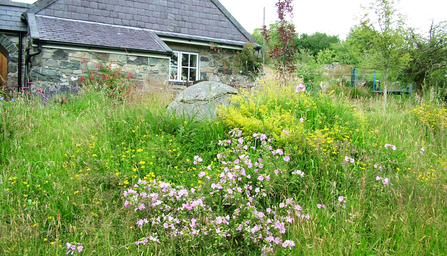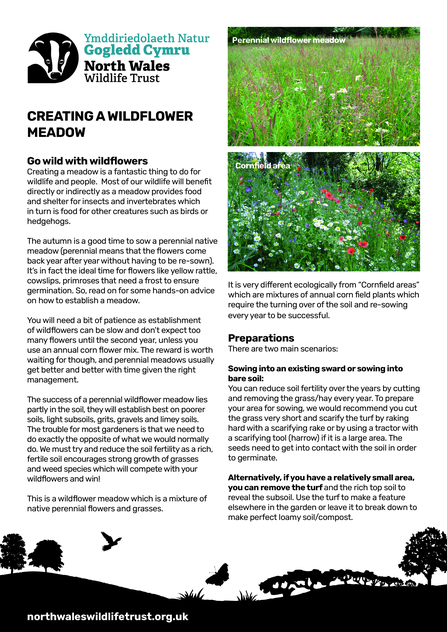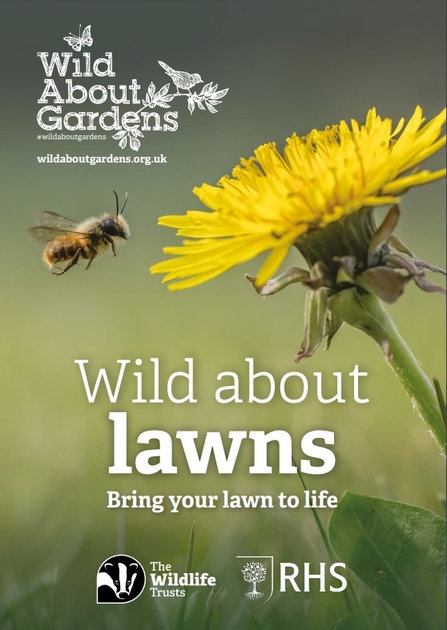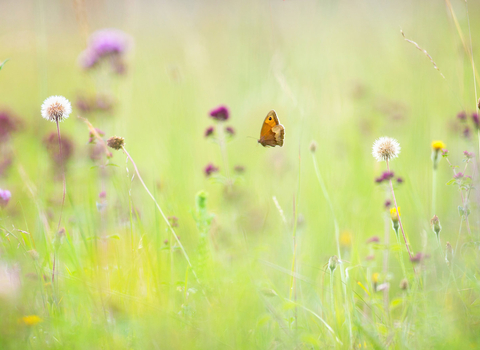Why plant a wildflower meadow?
Natural wildflower meadows are one of the rarest habitats in the UK and we have lost 97% of our wild flower meadows since the 1930s. They are a hugely diverse habitat that supports hundreds of species of invertebrates, namely pollinators such as bees. Land development and farming have all contributed to this decline but our own gardens and green spaces can offer a small haven for wildlife.
A wildflower meadow helps wildlife diversity and the environment through carbon capture. Even when cut for hay once a year, a hectare of wildflower meadow can capture and store 3 tonnes of carbon, or 11 tonnes of CO2 annually!
Wildflower meadows also support a wide range of invertebrates including butterflies, such as the small tortoiseshell, the day-flying burnet moth and marbled white to name but a few. You may also see bumblebees, dragonflies, damselflies, and chiffchaff or wren songbirds as well as reptiles such as the grass snake.

© Anna Williams

Here's your handy guide to creating a wildflower meadow!

Wild About Lawns © RSWT
Or pick up a few tips for creating a wildlife friendly lawn with our Wild About Gardens guide
Where to start?
- Let your grass grow long and see what flowers you may already have in your sward. There might be a number of flowers there including orchids.
- If there are no flowers in your lawn you can add some by sowing seeds on bare soil patches within your grassy area or by planting plug plants.
- You won't succeed by putting wildflower seeds straight onto the grass.
- If the above options don't work for you, you can start from scratch by removing the topsoil and sow a native wildflower mix that is suitable to your soil.
- For more details of the different methods download our 'Creating a wildflower meadow' guide HERE
How to select seed and sow?
- Ensure you select a wildflower seed mix that is suited to your soil; clay, loamy, chalk.
- For an instant showy display, annual cornfield mixes are a good choice. They are annual plants and need to be sown every year. Cornfield mixes include cornflower, corncockle, corn marigold and poppy.
- For a longer lasting perennial wildflower meadow, seed mixes will vary based on your soil type but may include knapweed, yarrow, musk mallow, wild carrot, field scabious, yellow rattle.
- Your mix may also include up to 80% native meadow grasses, including crested dogs tail, common bent and red fescue. These mixes can take longer to establish (up to 2 years) but provide a more natural and complete meadow habitat.
- Seed mixes can be hand sown and the sowing rate is usually 4g/m2. It is a good idea to add sand to your seed mix to bulk it up and to make even distribution easier.
- Sowing can be done either in spring or autumn.
How to maintain your meadow?
- The most important factor for maintaining your perennial meadow is to take ‘hay cuts’ after the flowering period each summer (July-August).
- A hay cut refers to the grasses and flowers being cut at their base, rather than being mulched up as with a normal lawn mower.
- Always leave the cuttings for a few days to dry out and drop seed before removing the cuttings from the site.
- Cornfield annual areas need to be re-sown every year unlike perennial meadows where the flowers come again year after year.

Jon Hawkins Surrey Hills Photography
Wild about gardens?
The Wildlife Trusts and RHS set up Wild About Gardens to celebrate wildlife gardening and to encourage people to use their gardens to take action to help support nature. Many of our common garden visitors – including hedgehogs, house sparrows and starlings – are increasingly under threat. But together we can make a difference.
This year we’re going wild about lawns. Find out how our green spaces can provide for wildlife.




